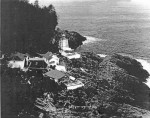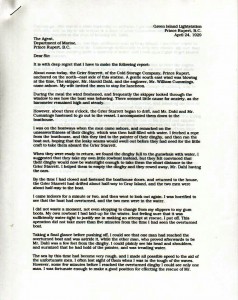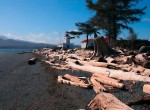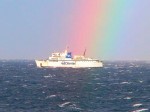What is a Widow’s Walk? It is definitely not a new dance!
I will give you a hint – It is a fixture built onto a house. It was prevalent in the days of sailing ships, both in Italy where it originated as a style of architecture, and also in eastern American houses on the waterfront.
Here’s a legendary quote on the use of the Widow’s Walk:

The faithful and dedicated wife, performing her daily circumambulations on the cold and lonely widow’s walk: The next sail to top the horizon may well carry her husband, gone to sea these many years. But not today. The sun sets, bringing to a close her lonely vigil for this day. Perhaps, though, the much-anticipated vision will appear tomorrow and if not tomorrow, the next day. – Fishermen’s Voice
That article gives more credit to the use of the widow’s walk for fire prevention rather than for lonely widows pining for their husbands. Below in the gallery are some photos of what a Widow’s Walk looks like.
[nggallery id=59]
Give up? OK, check out this Wikipedia article1 for a good description.
It is not necessarily a lighthouse thing, but maybe, just maybe, a lonely lighthouse widow did walk around the lantern searching for the return of her man from town with the mail and groceries in his rowboat, or late from a fishing or hunting trip. On this website there are many stories of death on the water with a lighthouse background.
By the way, The walkway around the outside of a lighthouse lantern room (for cleaning the lantern glass) is called a Gallery, and the walkway around the light inside (for lens cleaning) is called the Lantern Gallery.
************************
Lighthouse Watch – House Rental, North Carolina, USA. c/w widow’s walk!
|
Caswell Beach house rental, North Carolina, USA. Interested? Contact
Oak Island Accommodations, Inc. Telephone:+ 1-800-518-4118 ext. 7153373 |
||
|
|
||
- Bedrooms 4
- Sleeps 8
-
3 Bathrooms
FOOTNOTES:
1 Widow’s Walk – A widow’s walk also known as a “widow’s watch” (or roofwalk) is a railed rooftop platform often with a small enclosed cupola frequently found on 19th century North American houses. A popular romantic myth holds that the platform was used to observe vessels at sea. The name is said to come from the wives of mariners, who would watch for their spouses’ return, often in vain as the ocean took the lives of the mariners, leaving the women widows.[1] In other coastal communities, the platforms were called Captain’s Walk, as they topped the homes of the more successful captains and supposedly ship owners and captains would use them to search the horizon for ships due in port.
However, there is little or no evidence that widow’s walks were intended or regularly used to observe shipping. Widow’s walks are in fact a standard decorative feature of Italianate architecture, which was very popular during the height of the Age of Sail in many North American coastal communities. The widow’s walk is a variation of the Italianate cupola.[2] The Italianate cupola, also known as a “belvedere”, was an important ornate finish to this style, although it was often high maintenance and prone to leaks.[3]
Beyond their use as viewing platforms, they are frequently built around the chimney of the residence, thus creating access to the structure. This allows the residents of the home to pour sand down burning chimneys in the event of a chimney fire in the hope of preventing the house from burning down
[private]http://www.homeaway.com/vacation-rental/p7153373h#map
http://southerncottages.blogspot.com/2010/04/legend-of-widows-walks.html
http://www.fishermensvoice.com/archives/0310widowsWalk.html[/private]




















